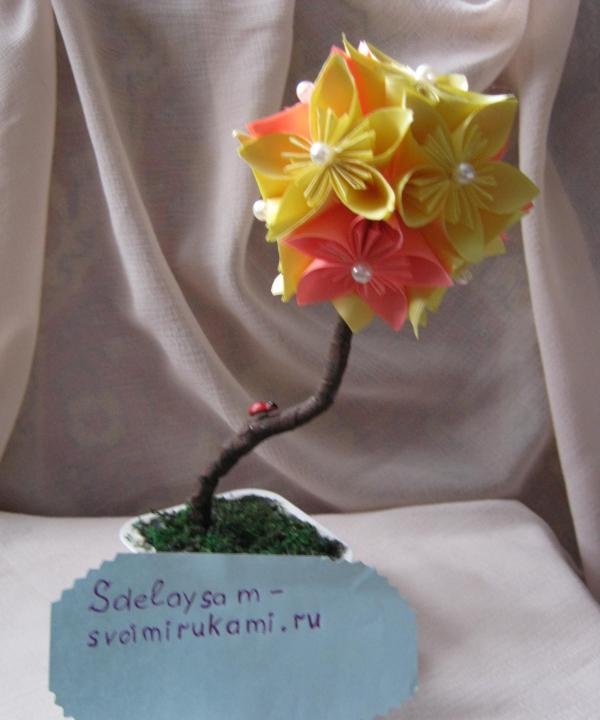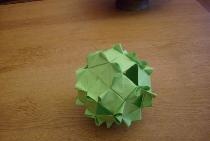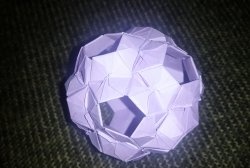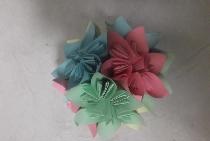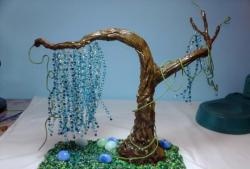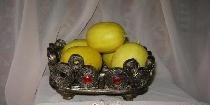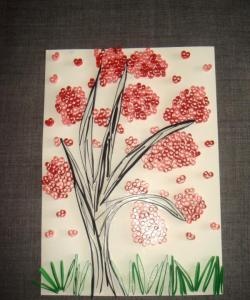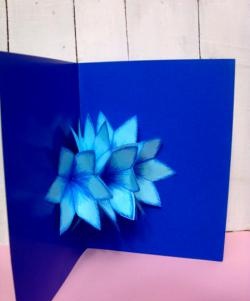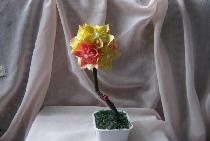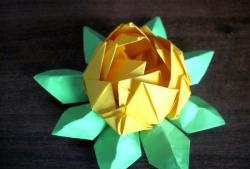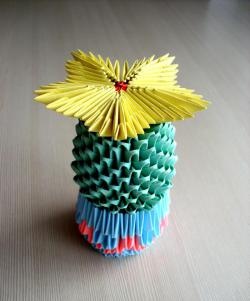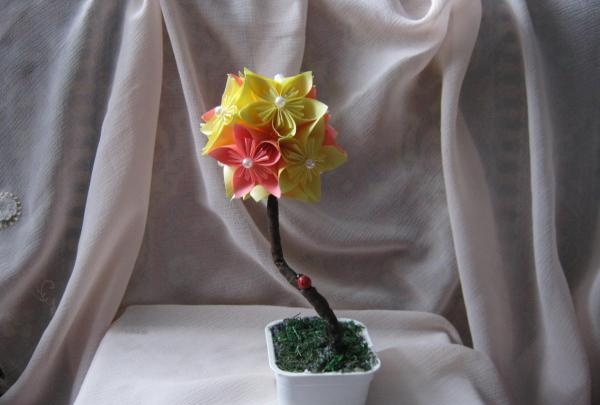
To work you will need:
- colored double-sided paper of two or more shades;
- scissors;
- glue (any will do);
- decorative elements. In my work I used beads, floral tape and wire for the trunk, a little gypsum for the “soil”, a container where the tree will be planted and moss.
We are done with the preparations, you can start creating a beauty called “flower kusudama”. In some sources, this kusudama is called “Morning Dew” or “Morningdew”. But no matter what it’s called, I’ll say that it simply blew my mind, and I really wanted to make it.But we chatted, let's get to work.
Stages of work:
1 The first thing we need to do is decide on the size of the kusudama. I took squares measuring 6x6 cm. As a result, I got a ball of about 8 cm, consisting of 12 flowers.
Each kusudama consists of modules and flower kusudama is no exception. One petal is one module, from which one large module is then formed.
Schematically, the assembly of kusudama looks like this.

But in practice it looks like this:
We take a square and fold it diagonally once; if we do this twice, then when we form the petal module, a scar will be visible. The fold line should be at the bottom.

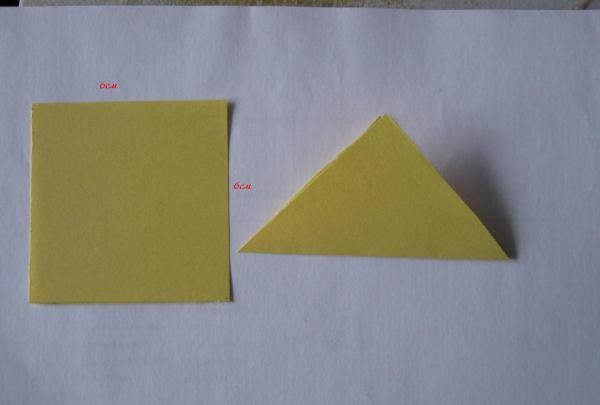
Now we take one side and bend it towards the center, repeating the same on the other side. While working, make sure that all the tips match, this is important, because in the future it will be visible that the paper has “flaked.” As a result, we should get this:

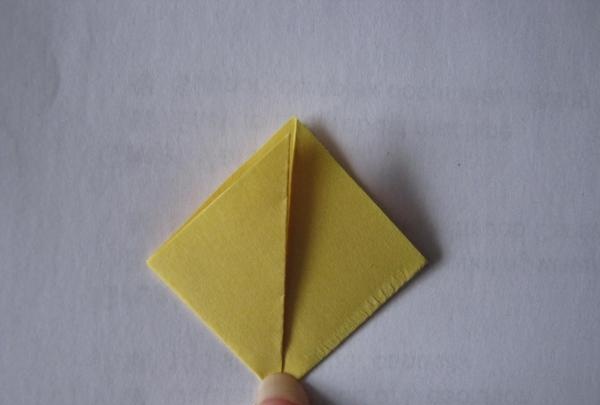
Next, take one side, straighten it and fold it in half to the fold line. We repeat the same thing on the other side. As a result, we should get something like a trefoil.
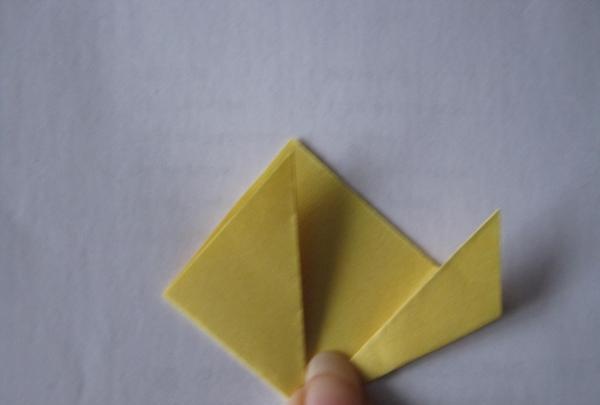
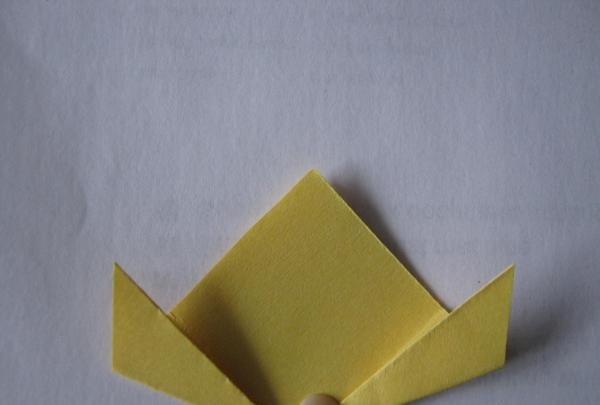
At the next stage, we put our finger into the resulting triangle and straighten it. We repeat the same thing on the other side.
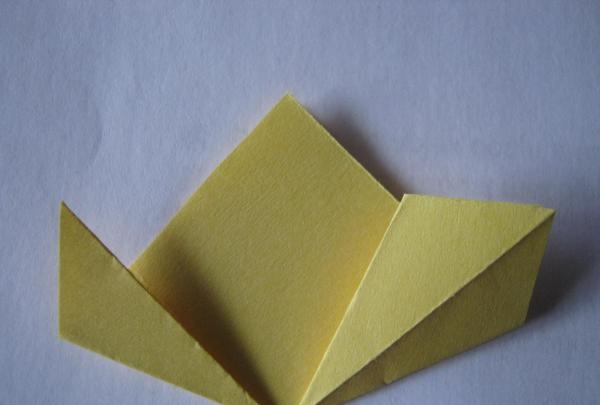
As a result, we should get something like this “broad-leaved trefoil”.

Next, we bend the “protruding” triangle inward, as if towards ourselves. We do the same on the other side.


As a result, we got triangles on both sides. Along the fold line, fold them inward again.
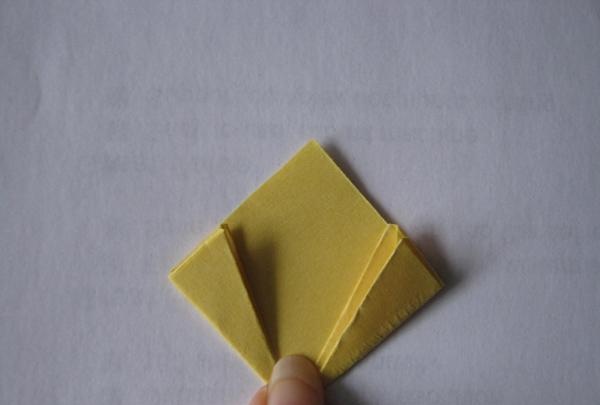
We can say that one module is almost ready, all that remains is to carefully connect the sides and we will get one petal with small rays.


For one complete module we will need five petals, but in fact there may be fewer of them, or, conversely, more. Here, as they say, it’s a matter of taste and desire. Carefully glue the petals together to form a beautiful, even flower. If the middle turns out to be uneven, you can always “hide” it under a bead, button or any other decorative element.
When all the flower modules are ready, we begin to form the ball. We glue the modules together by the petals.


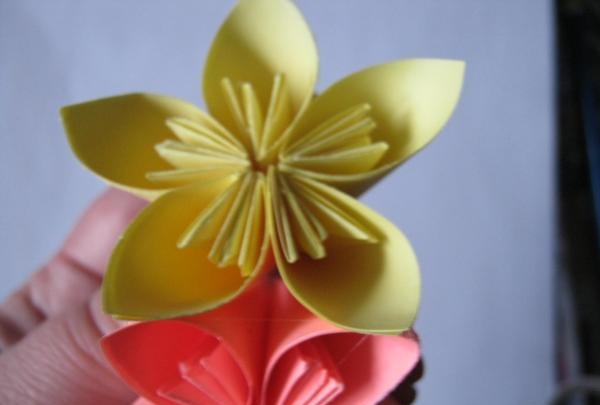
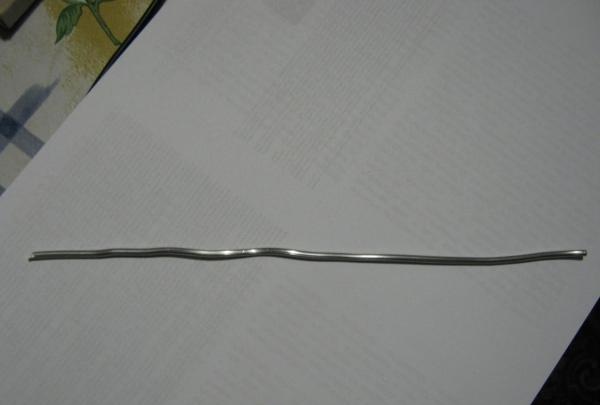



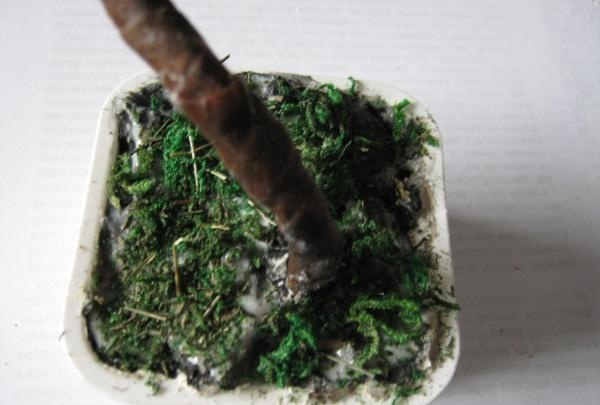
While the finished ball is drying, we begin making a trunk for the tree. To do this, take a wire, preferably thicker. Next, I wrapped the wire with a newspaper tube so that the trunk was thick. It is not necessary to wrap the barrel evenly, one might even say a little carelessly, this will make the barrel as close to the real thing as possible. They were fixed in the right places with glue. Next, we wrap the trunk with brown floral tape. Bend one end of the wire so that when “planting” the tree cannot be pulled out. If desired, the trunk can be left straight, or you can make a bend. We insert the stem into the flower free from the bead and dilute the plaster to the consistency of thick sour cream, fill the mold and “plant” the tree. As soon as the plaster has hardened, you can paint it “underground” and smear it with glue in some places, sprinkle it with moss and let the whole composition dry well.
